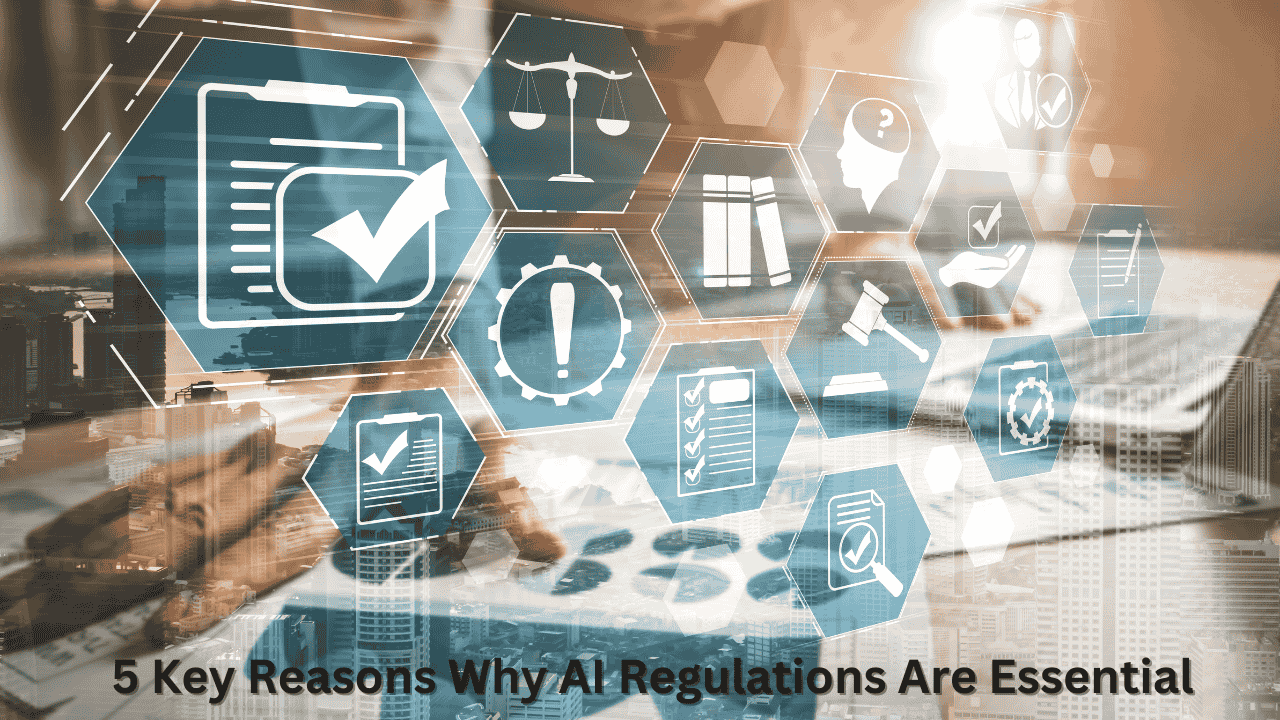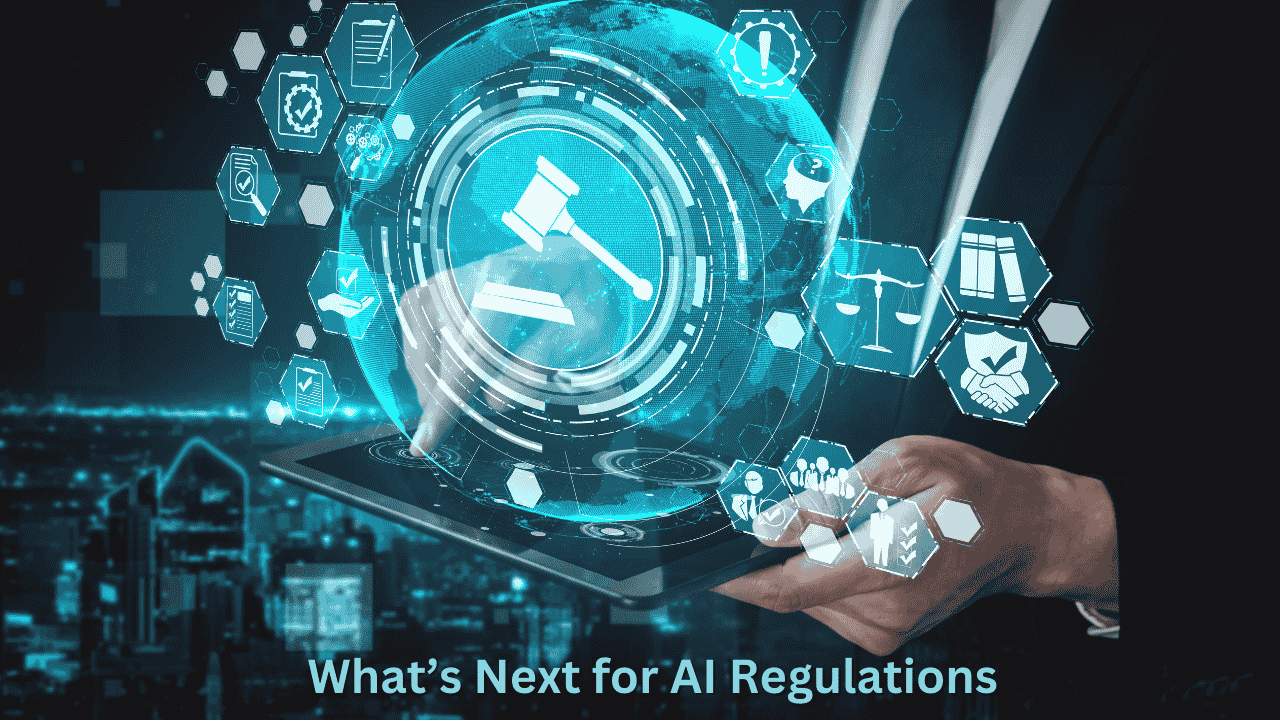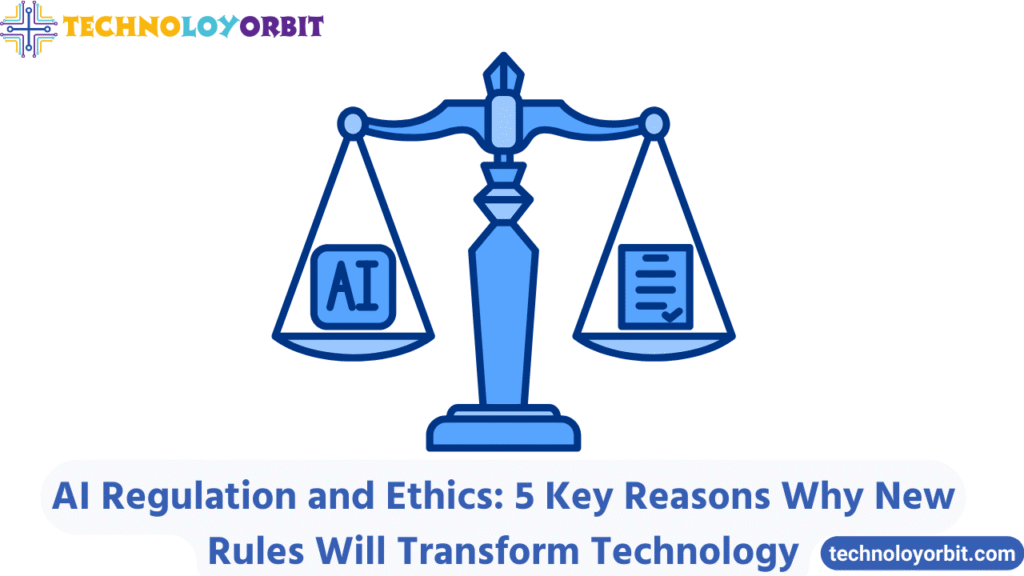AI Regulation and Ethics are crucial for ensuring AI technologies are developed safely, ethically, and transparently, addressing issues like bias, privacy, and accountability while promoting responsible innovation.
Artificial Intelligence (AI) is no longer just the stuff of science fiction. It’s here, in our smartphones, homes, workplaces, and even in medical diagnostic rooms. From voice assistants like Siri to the autonomous vehicles we see on the horizon, AI is reshaping the way we interact with technology—and with each other.
However, as AI becomes increasingly integrated into our daily lives, it raises some significant questions about ethics, accountability, and regulation. With great power comes great responsibility, and AI is no exception. We stand at a crossroads where regulatory measures can either pave the way for a safe, ethical, and transparent AI future, or allow unchecked, potentially harmful technologies to develop.
In this article, we’ll explore 5 key reasons why new AI regulations and ethics guidelines are crucial. By the end of this post, you’ll understand how these changes can lead to a more responsible, safe, and transparent AI landscape—one that benefits everyone.
5 Key Reasons Why AI Regulations Are Essential

AI regulation isn’t just a good idea—it’s a necessity. Without proper oversight, AI could have unintended consequences, from worsening societal inequalities to threatening our privacy and safety. Here are five compelling reasons why we need strong AI regulations and ethics.
Safeguarding Public Safety
Imagine you’re in a self-driving car, cruising down the highway. The AI controlling that vehicle is making decisions in real-time, navigating the road and reacting to traffic. But what happens if the system malfunctions? What happens if the AI makes a mistake, and lives are lost?
AI systems are already being used in life-and-death situations—such as in healthcare, autonomous vehicles, and even military applications. With such responsibility, it’s crucial that AI systems are safe and accountable. But without regulation, there’s a risk that AI will operate unchecked, potentially causing harm.
For instance, in 2018, an autonomous Uber vehicle struck and killed a pedestrian in Arizona, a tragic accident that was traced back to flaws in the vehicle’s AI system. This is one of many examples where the failure of an AI system has resulted in real-world harm.
Why Regulation Matters:
By implementing AI regulations, we can ensure that these systems undergo rigorous testing, are held to higher safety standards, and are programmed to prioritize human safety over all else. Through comprehensive regulations, we can prevent these tragic outcomes from happening in the future.
Combatting AI Bias and Ensuring Fairness
We’ve all heard about the bias in AI. In fact, AI has often been accused of amplifying societal biases rather than eliminating them. AI systems are only as unbiased as the data they’re trained on, and when that data reflects societal prejudices, the AI inherits those same biases.
Consider an AI recruitment tool that inadvertently favors male candidates over female candidates because it’s trained on data from past hiring trends, where more men were hired in the industry. Or facial recognition software that is less accurate at identifying people of color.
This bias problem is not just a flaw in the technology—it’s a serious issue that perpetuates inequality. AI systems can affect everything from hiring practices to law enforcement decisions. If left unchecked, these biases can widen the inequality gap.
Why Regulation Matters:
AI regulations can ensure that AI developers test their systems for bias and address discriminatory outcomes. By enforcing mandatory audits of AI systems and requiring diverse datasets, regulators can prevent these technologies from perpetuating unfair practices.
Protecting Privacy and Data Security
Every time you interact with an AI system—whether you’re talking to a voice assistant or using a recommendation algorithm—it collects and processes data about you. While this data can be useful for improving services, it also poses a major risk to privacy.
In 2022, the ChatGPT scandal drew widespread attention to the dangers of AI-driven data collection. Users’ interactions with the AI were being stored and used without clear consent, raising questions about how much control individuals should have over their personal data.
Without adequate regulations, companies can take advantage of loopholes, gathering personal data without consent or misuse. This creates privacy risks and compromises the security of individuals’ most sensitive information.
Why Regulation Matters:
AI regulations must include strict guidelines for data privacy and security. These regulations would ensure that AI companies operate transparently, protect sensitive user data, and give consumers the ability to control what data they share.
Navigating AI’s Impact on Jobs and the Economy
AI’s potential to disrupt traditional industries is both exciting and frightening. Automation is already replacing jobs in many industries, from manufacturing to customer service. In fact, a 2021 study estimated that by 2030, up to 30% of jobs could be replaced by AI-driven automation.
While AI offers increased efficiency and innovation, it also presents challenges to workers who may find themselves replaced by machines. With millions of people potentially out of work, it’s crucial that we manage this transition in a fair and equitable way.
Why Regulation Matters:
AI regulations should include plans for workforce retraining, support for displaced workers, and strategies for managing the economic impact of automation. By regulating AI’s use in industries, we can ensure that it complements human workers rather than completely replacing them.
Making AI Systems Transparent and Understandable
At present, many AI systems operate as “black boxes”, making decisions without providing clear reasoning behind them. This is especially concerning in areas like healthcare and criminal justice, where lives and freedoms are at stake.
For example, in the criminal justice system, AI tools are being used to predict recidivism and assess the risk of reoffending. But without transparency, how can anyone be sure that these decisions are fair and accurate?
Why Regulation Matters:
AI regulations should mandate transparency and explainability. If AI is making critical decisions, it should be clear how those decisions were made. This will build trust and ensure that AI systems are accountable for their actions.
Global Efforts to Regulate AI: A Look at Key Players
Europe’s Comprehensive AI Act
Europe is leading the way with its AI Act, one of the world’s first comprehensive attempts to regulate AI. The AI Act classifies AI systems based on their risk levels and sets specific requirements for high-risk applications like healthcare, transport, and law enforcement. It emphasizes the importance of transparency, accountability, and safety.
The U.S.: Balancing Innovation and Regulation
The United States is taking a more decentralized approach. While some states, like California, have proposed AI regulations, there’s no overarching national framework. The National AI Initiative Act sets the groundwork, but experts argue that a more cohesive regulatory strategy is needed.
China’s Authoritarian AI Oversight
In China, AI regulations are largely shaped by the government, with an emphasis on security and social control. AI systems in China are frequently used for surveillance, raising concerns about individual freedoms.
The Path Forward: What’s Next for AI Regulations

As artificial intelligence (AI) continues to make transformative strides across various secto
rs, its regulatory landscape must evolve just as rapidly to keep pace with the technology’s capabilities and risks. The future of AI regulation isn’t just about setting rules—it’s about creating an adaptive, dynamic framework that can balance ethical concerns, technological growth, and international collaboration.
1. The Need for a Unified Global Approach
One of the most pressing challenges in regulating AI is the lack of consistent international standards. Currently, different countries and regions have varying approaches to AI regulation, and often, these regulations don’t align. For instance, while Europe is at the forefront with its AI Act, other regions, such as the United States and China, are taking vastly different approaches. This lack of coordination presents issues for global companies that must navigate a complex, fragmented regulatory environment.
The future of AI regulation will depend on global cooperation. Just as climate change, cybersecurity, and data protection have led to international agreements and treaties, the need to regulate AI could foster similar global collaboration. Organizations like the United Nations, OECD, and World Economic Forum may play crucial roles in facilitating dialogues and agreements between countries to ensure that AI regulations are comprehensive, consistent, and not in conflict with one another.
In the coming years, we can expect to see initiatives to create international standards for AI ethics and safety, including shared principles around transparency, accountability, and fairness.
2. Ethical AI: Moving from Theory to Practice
While many countries have started to discuss AI ethics, the practical implementation of ethical guidelines remains a significant challenge. As AI technologies continue to advance, so do the ethical dilemmas associated with them. For example, the use of AI in predictive policing, hiring, and surveillance raises critical questions about privacy, bias, and individual rights.
Moving forward, there will likely be a shift toward making ethical guidelines actionable. Governments will need to enforce clear regulatory frameworks that ensure AI systems are transparent, auditable, and non-discriminatory. This means creating standardized tools for testing AI systems for bias, ensuring data privacy, and holding companies accountable when their AI technologies cause harm.
Incorporating ethics into AI regulation will also mean involving a broader range of stakeholders, including ethicists, sociologists, and human rights advocates, in the development of these rules. Creating a multidisciplinary approach will ensure that AI technologies are not just technologically advanced, but also socially responsible.
3. Adaptive Regulation: Keeping Pace with Rapid Innovation
AI technologies evolve quickly, and any regulation put in place today might not be adequate for the challenges tomorrow. In response, we can expect a more flexible regulatory approach—one that is not static but evolves alongside AI advancements. This might involve the creation of agile regulatory bodies that can adapt to new developments in AI more quickly.
For example, regulatory agencies could use sandbox models—where new AI applications are tested in a controlled environment under regulatory oversight. This would allow regulators to evaluate new technologies before they are widely deployed, ensuring they meet safety and ethical standards without stifling innovation.
Regulators may also adopt a tiered system that adjusts based on the complexity and risk associated with different AI technologies. Low-risk applications, like AI used for entertainment recommendations, may face lighter regulations, while high-risk applications, such as AI in healthcare or criminal justice, would face stricter rules.
4. AI for Good: Encouraging Positive Societal Impact
A critical component of AI regulation moving forward will be its potential to address global challenges. AI is already being used to tackle problems such as climate change, poverty, and global health issues. For example, AI-driven models are helping scientists predict and mitigate the effects of climate change, while machine learning algorithms are assisting in drug discovery and vaccine development.
Future AI regulations should encourage and incentivize the use of AI for positive societal impact. Governments could introduce policy incentives for businesses that use AI to solve major global challenges—such as reducing carbon footprints, improving access to education, or enhancing public health systems.
In this sense, AI regulation will no longer be solely about mitigating harm, but also about harnessing AI’s potential for good. Encouraging ethical AI innovations that benefit society can be as important as curbing its harmful effects.
5. Creating Accountability and Liability Standards for AI Systems
As AI technologies become more autonomous, questions of liability and accountability become increasingly important. If an autonomous vehicle causes an accident or an AI-powered medical tool provides an incorrect diagnosis, who is responsible? The developer, the company, or the AI itself?
In the future, regulatory bodies will need to set clear standards for accountability. This could involve creating new legal frameworks for AI, where human operators or developers are held accountable for AI actions, especially when the system fails or causes harm. In addition, regulators may establish a “right to explanation”, ensuring that decisions made by AI systems are transparent and can be explained to affected individuals.
One promising area of development in this field is the concept of AI insurance—where companies that develop high-risk AI technologies might be required to carry insurance to compensate victims of AI-related accidents or harms. This would ensure that financial responsibility is clearly defined.
6. Public Awareness and Engagement in AI Regulation and Ethics
As AI systems become more embedded in our daily lives, the general public will need to be more informed about the implications of AI technology and how regulations protect their rights. This means that moving forward, AI regulation will have to be as much about public engagement and awareness as it is about the creation of laws.
Governments and organizations will likely invest in public education campaigns to inform citizens about how AI impacts their privacy, safety, and jobs. Public consultation and feedback will be essential in shaping AI regulations that reflect the needs and concerns of society. This includes creating public forums or democratic decision-making processes where individuals can voice their opinions on how AI technologies should be regulated.
Moreover, as AI becomes more pervasive, we can expect AI literacy to become a core component of education systems worldwide. This will empower future generations to better understand the technologies shaping their world and actively participate in discussions about their regulation.
Conclusion: Shaping a Responsible AI Future
AI is no longer a futuristic concept—it’s here, and it’s here to stay. But without proper regulation, AI could potentially cause harm to individuals, societies, and economies. It’s crucial that governments, tech companies, and other stakeholders come together to ensure that AI is developed responsibly and ethically.
By implementing robust AI regulations, we can create a future where AI works for humanity—not against it. Please follow out blog Technoloyorbit.



